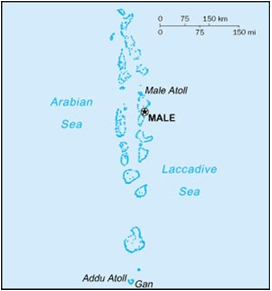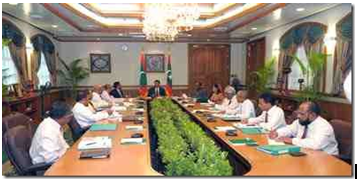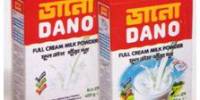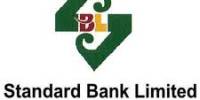History
Rahimafrooz, founded in 1954 by Late A. C. Abdur Rahim as a trading company, is one of the largest business groups in Bangladesh. It consists of nine SBUs and several other affiliations. The Group’s Chairman is Mr. Afroz Rahim and the Managing Director is Mr. Feroz Rahim
Rahimafrooz operates in three broad domains: automotive after market, power and energy, and retail chain. It sells tyres, batteries, lubricants, emergency power products, diesel as well as gas generators, lighting products, electrical accessories, solar systems, energy solutions using compressed natural gas, and power rectifiers. The Group also runs ‘Agora’ the first retail chain in Bangladesh.
The Group has strengthened its market leadership at home while reaching out to international markets. Ranging from automotive after market products, energy and power solutions, to a retail chain.
Rahimafrooz produces and markets a range of battery products – automotive, motorcycle, and appliance batteries, Industrial (stationary, deep cycle, traction, VRLA) batteries, IPS and UPS batteries, and rectifiers. Lucas and Spark are the leading names in the local battery marketwhile Volta, Optus and Delta batteries are fast gaining equity as International brands. The Group’s portfolio includes international tyre brands Dunlop and Kenda, and its own brand RZ Tyre. Rahimafrooz is the exclusive franchisee of the full range of lubricant brand Castrol in Bangladesh.
Through Rahimafrooz IPS, UPS and Voltage Stabiliser, the Company enjoys clear leadership of the emergency power products market. The Company brings to Bangladesh leading gas and diesel generator brands – Pramac as well as Mitsubishi. It also markets home and industrial lighting products from General Electric USA (GE) and electrical accessories from Hager France.
Rahimafrooz, in 2001, made a breakthrough in the urban lifestyles by launching one of very few retail chains in the country – Agora.
Rahimafrooz’s Renewable Energy division has been providing Solar solutions. It has supplied over 52,000 solar home systems (SHS) to the rural, off-grid areas of Bangladesh where the national grid cannot reach. The Company has helped light the darkness by making available the SHS through micro-credit, whereby a family can pay as low as USD 7.00 per month for lighting up their homes, workplaces, business, etc. The Company, in recognition of its solar efforts, received the McGraw-Hill Platt Global Energy Award in 2004 and the Global Ashden Award in 2006.Rahimafrooz also offers equipments for CNG refueling, conversion, conversion centres, and maintenance.
The Group operates a non-profit organization Rural Services Foundation (RSF) through which the solar home systems reach the customers in the rural areas of Bangladesh.
Rahimafrooz is also endeavouring into tyre retread, besides manufacturing and marketing emery cloths and abrasive papers. In a joint venture, the Group has enterprised into the first ever fiber optical commercial networking backbone in Bangladesh in the form of Metro net Bangladesh Ltd.
Rahimafrooz is one of the respected and reputed business houses in Bangladesh. It has just crossed 50 years of operation. Rahimafrooz has endured turbulences of the last 50 years and has been able to transform itself from a small trading company into a leading diversified business house. It consists of Rahimafrooz Batteries Ltd, Rahimafrooz Distribution Ltd, Rahimafrooz Superstores Ltd, Rahimafrooz CNG Ltd, Rahimafrooz Energy Services Ltd, Excel Retread Ltd etc.
Products
- Rahimafrooz Batteries Ltd,
- Rahimafrooz Distribution Ltd,
- Rahimafrooz Superstores Ltd,
- Rahimafrooz CNG Ltd,
- Rahimafrooz Energy Services Ltd,
- Excel Retread Ltd etc.
- Rahimafrooz Generator Ltd
- Rahimafrooz Solar Ltd
Why Rahimafrooz solar panel?
We have selected Rahimafrooz solar panel as our exporting product because Rahimafrooz Group has a colossal brand value in Bangladesh as well as some other countries because of their-
- better quality
- Reasonable price
- Colossal brand value
Selected Country:
Our selected country for exporting Rahimafrooz solar panel is Maldives.

History
Formerly a Sultanate under Dutch and British protection, the Maldives is now a republic. Long ruled over with an iron fist by Maumoon Abdul Gayoom, who did not hesitate to jail dissidents and was re-elected five times in more or less rigged elections, resistance to his rule culminated in violent rioting in 2003 and 2004. Much to everybody’s surprise, free and fair elections were finally held in 2008, and Gayoom gracefully conceded defeat to opposition leader Mohamed Nasheed, “Anni”.
The Tsunami of 26 December 2004 caused extensive damage to the Maldives – of a population of only 290,000, over a third was direct affected by the tsunami and more than 29,000 people were left homeless. The economic damage alone was over 62% of the GDP or US$470 million.
Some islands, including Thaa atoll Vilufushi, felt the brunt of the wave, and residents on the island are now living in temporary shelters on the island of Buruni in the same atoll. More than a year later, there are in excess of 11,000 people in temporary shelters across the country. It was a brutal shock to the small island state which is so vulnerable to environmental disasters and global warming.
Why Maldives?
Our selected country for exporting Rahimafrooz solar panel is Maldives because-
- Maldives has colossal demand for solar panel.
- This market is very prospective for our business.
- There are no strict tariffs in Maldives.
PEST Analysis
Political analysis
System of Government
The politics of the Maldives take place in the framework of a presidential republic, whereby the President is the Head of Government. Executive power is exercised by the government. The President heads the executive branch and appoints the Cabinet; Like many presidential democracies, each member of the cabinet need to be approved by the Parliament. The President, along with the vice President, is directly elected by the people to a five-year term by a secret ballot. He could be re-elected to second 5 year term, the limit allowed by the Constitution. The current President of the Maldives is former Amnesty International prisoner of conscience, Mohamed Nasheed, who defeated President Maumoon Abdul Gayyoom, who had ruled the country for 30 years, in the county’s first multiparty Presidential election

Maldives is a presidential republic. The president is head of government; after nomination by the legislature, he must be approved by national referendum. The legislature has 40 elected members, and 8 presidentially appointed members. Political parties only became legalized in 2005.
FOREIGN RELATIONS
Maldives follows a nonaligned policy and is committed to maintaining friendly relations with all countries. According to the Foreign Ministry, the country has a UN Mission in New York, embassies in the United States (the Ambassador to Washington is resident in New York), Sri Lanka, China, the United Kingdom, Bangladesh, India, Japan, Singapore, and Malaysia, as well as diplomatic missions in Geneva and Brussels. India, Pakistan, Bangladesh, and Sri Lanka maintain resident embassies in Male. Denmark, Norway, the U.K., Germany, Turkey, and Sweden have consular agencies in Male under the supervision of their embassies in Sri Lanka and India. The UNDP has a representative resident in Male, as do the UN Children’s Fund (UNICEF) and the World Health Organization (WHO). Like the United States, many countries have nonresident ambassadors accredited to the Maldives, most of them based in Sri Lanka or India. The Maldives is a member of the Organization of the Islamic Conference (OIC) and the Non-Aligned Movement (NAM). In 2010, Maldives was elected to a seat on the United Nations Human Rights Council, and in 2011 it will host the 17th annual South Asian Association for Regional Cooperation (SAARC) summit. President Nasheed’s skilled rhetoric and his consensus-building among smaller island nations brought global attention to Maldives at the December 2009 United Nations climate change conference. In March 2010, Maldives hosted a donor forum that yielded $313 million in pledges to the country from multilateral development banks, the European Union, and many nations including the United States.
Trade Policy
The Maldives is a small country composed of 200 inhabited islands that is very dependent on imports. The simple average of the MFN applied tariff rate has been virtually unchanged since 2000, and now stands at 20.4 percent. It remains significantly higher than the average for the South Asia region and lower-middle-income countries, at 13.5 and 11.4 percent, respectively. Based on the MFN applied tariff, it ranks as the 173 rd of 181 countries, where 1st is least restrictive. There is little difference between the treatment of agricultural and non-agricultural goods, with the latter having a slightly higher average tariff. Taxes on imports of non-agricultural goods are a means of taxing tourism, as a large share of merchandise imports is directly related to the provision of tourism services. Since 2006 the Maldives has increased its maximum tariff on all goods (excluding alcohol and tobacco) from 112 to 142 percent. In 2006 this maximum tariff was applied to plastic packaging materials. The trade policy space, as measured by wedge between bound and applied tariffs (the overhang), has decreased slightly since 2000, now standing at a relatively low 16.8 percent, compared with 54.8 percent on average for its regional neighbors and 29.5 percent for lower-middle-income countries. Regarding the extent of its trade liberalization in services, the Maldives ranked 142nd
In November 2008, the government announced that it would introduce a bill, now called the Import Export Bill, to reduce import tariffs on diesel fuel, medical supplies, and certain food items in an attempt to lower.
the cost of living.1 However, the bill is still being deliberated in parliament where members are discussing whether to extend the bill to also cover tariffs on more items such as agricultural goods and cooking oil and also whether to address new additional concerns like burdensome customs procedures. As of June, the bill had been sent to the economic affairs committee.
Actually there are no any strict tariffs for importing product in Maldives and it has a low tax tariff for SARC countries that is why we can export our product to Maldives easily.
Trade Outcomes
Total trade grew by 25.7 percent during 2008 in nominal U.S. dollar terms.4 Total exports (which were less than one tenth the value of imports in 2008) increased by 16.8 percent in 2008, although there was no growth in the last quarter. The Maldives’ export sector has a low degree of diversity. The largest export industry is tourism, which accounts for almost two-thirds of exports and 28 percent of GDP. The majority of tourists are Europeans, leading to expectations that the global economic slowdown will cause a contraction in 2009. Exports in the first quarter of 2009 fell by 53.2 percent over the same quarter 2008 in nominal U.S. dollar terms. Fishing is the next largest industry, making up 5 percent of GDP in 2007.
5 The garment sector, which used to contribute to a substantial portion of exports, all but disappeared in 2005.6
The economy of the Maldives is very import-dependent, relying on imports to provide a significant portion of food and fuel. In 2008 goods imports were equal to 110 percent of GDP. Total imports grew by 26.6 percent in 2008, largely driven by the increases in commodities prices. As commodity prices fell in 2008, imports fell, decreasing by 8.1 percent in the fourth quarter. In the first quarter of 2009, imports fell 41.7 percent year-on-year. The drop in imports is also affected by a shortage of foreign exchange. However, this has been somewhat ameliorated by a credit line extended by the Export-Import Bank of India in the amount of US$50 million, which is now being used by the major traders. A majority of the Maldives’ exports are sent to Asian countries, with Thailand and Sri Lanka being the destination for almost 60 percent of all exports. Singapore, the United Arab Emirates, and India are the top three sources of imports. Foreign direct investment inflows accounted for 1.4 percent of GDP in 2007
Political stability
The Maldives has a strong record of political stability resulting from homogenous nature of our society with one culture, one religion and one language.
Economic analysis
Economy
Tourism, Maldives largest industry, accounts for 20% of GDP and more than 60% of the Maldives’ foreign exchange receipts. Over 90% of government tax revenue comes from import duties and tourism-related taxes. Over 600,000 tourists visited the islands in 2006. Fishing is a second leading sector. The Maldivian Government began an economic reform program in 1989 initially by lifting import quotas and opening some exports to the private sector. Subsequently, it has liberalized regulations to allow more foreign investment. Agriculture and manufacturing continue to play a minor role in the economy, constrained by the limited availability of cultivable land and the shortage of domestic labor. Most staple foods must be imported. Industry, which consists mainly of garment production, boat building, and handicrafts, accounts for about 18% of GDP. Maldivian authorities worry about the impact of erosion and possible global warming on their low-lying country; 80% of the area is one meter or less above sea level.

GDP (2010): $1.48 billion.
GDP growth rate (2010): 4.8%.
Per capita GDP (2010): $4,770.
Inflation, year over year (2010): 4.7%.
Debt, external (2009): $933 million.
Exchange rate (official peg): 12.8 rufiyaa (MVR) = U.S. $1.
Unemployment rate (2006): 14.4%.
Current account balance (2010): -$460 million.
Percentages of GDP (2010): Tourism–29%; transport and communications–20%; government–18%; manufacturing–7%; fishing–3%; construction–6%; agriculture–2%; other–10%.
Trade (2010): Exports–$180 million: fish products. Major markets–Thailand, Sri Lanka, U.K., France. Imports–$980 million: foodstuffs, petroleum products, transport equipment, construction equipment. Major suppliers–Singapore, U.A.E., India, Malaysia, Sri Lanka, Thailand.
Economic Sectors
- Tourism
- Fishing
- Agriculture.
- Manufacturing.
- Other. The construction sector contributes approximately 6% of GDP.
Per capita income
The latest value for GNI per capita, Atlas method (current US$) in Maldives was 4,240 as of 2010. Over the past 13 years, the value for this indicator has fluctuated between 4,240 in 2010 and 1,830 in 1997.
Quality of Life
Economic growth in the Maldives has gone hand in hand with gains in human welfare. The United Nations Development Programmed (UNDP) ranked the Maldives 86th out of176 countries in its 2003 Human Development Report. The ranking is based on a composite of four indicators: life expectancy, literacy, school enrolment and GDP per capita. The position of the Maldives, which places the country in the Medium Human Development group, is seven places higher than its GDP per capita rank, suggesting that it is doing better than average with regards to other indicators. For example the Maldives has a relatively high adult literacy rate Compared to other countries with a similar income.
Social / Culture analysis
Culture
Maldivians are almost entirely Sunni Muslim, and the local culture is a mixture of South Indian, Sinhalese and Arab influences. While alcohol, pork, dogs and public observance of non-Muslim religions are banned on the inhabited islands, the resort islands are allowed to exist in a bubble where anything goes.
Note that the weekend in the Maldives runs from Friday to Saturday, during which banks, government offices and many shops are closed. You won’t notice this at the resorts though, except that lunch hours may be shifted for Friday prayer.
Population: 350,000 in 2010
Population growth rate: 1.66%. Population growth rate has dropped dramatically in recent years.
Ethnic groups: Maldivians.
Religion: Sunni Islam.
Languages: Dhivehi (official); many government officials speak English.
Education: Years compulsory–7. Enrollment–primary (grades 1-7) 100%; secondary (grades 8-10) 70%. Literacy–97%. (Sources: Maldives Department of National Planning and World Bank)
Health: Infant mortality rate–24/1,000 (Source: World Bank). Life expectancy–72 years.
Resident work force: Community, social and personal services–21%; manufacturing–13%; fishing–11%; tourism–11%; transport, storage, and communication–9%; other–35%
Climate The Maldives enjoy warm tropical temperatures year round, and a great deal of sunshine.
Local weather is affected by monsoons, with May to September being the wet season; seas can be rough and winds brisk. Severe weather conditions are rare; however, Indian Ocean cyclones do reach the islands on occasion.
Temperatures around 30°C throughout the year. However, rainfall increases considerably during the April-October southwest monsoon, particularly from June to August.
Technological Analysis:
Maldives is a little bit of far from the high technology. So in primary stage we may face some problem. But the government of Maldives is trying to improve their technology.
Analysis of national competitiveness
Cost of production factor: We will produce this product in Bangladesh and export in Maldives that is why the product will be produced by low cost, because of location specific advantage and low labor cost.
Market size: Maldives is a land where lives 350 thousand people so market size is not so big but here is one thing to see that there is no local company So with the better product in low price we can easily capture this market.
Firm strategy: Our firm strategy will be minimize cost of the product and also offer the product at lower price and better quality than others.
SWOT analysis
| Strength: |
- Product will be produce in our home country that’s why we will get location specific advantage.
- Reasonable price than others.
- Better quality than others.
- Colossal brand value.
Weakness:
- No previous experience about international business.
- Lacking of raw materials.
- Low management skills.
Opportunity:
- Targeted market has a colossal demand for solar panel.
- Bangladesh and Maldives both are Muslim country.
- No any strict tariff in Maldives.
Threat:
- Possibility of creating Trade tariff.
- Different culture.
- Cost may increase in future.
DECISION
Appropriate entry mode: after measuring every thing we can to see that ‘Exporting’ is mostly suitable for us. It will be more profitable for us rather than the other entry mode. We will establish there our own company image. So we decide for exporting. Causes of choosing export:
- Create own company image
- Use our own brand value
- Minimize cost
- Take the high benefit of Maldives market
Cause that’s why we avoid other entry mode
Licensing: If we go for licensing with the product we may loss control over it which may damage our brand value. Another thing is that there is no company which can maintain our brand value.
Franchising: Our product is not suitable for franchising that’s why we avoid it. Actually franchising is appropriate for fast food type of product and our product is not this type of product.
Joint venture: There is no such kind of local company or technology which can help us that’s why we avoid it.
Foreign Direct Investment: We avoid foreign direct investment because there is no location specific advantage in Maldives.
RECOMMENDATION
We need to make our management more strong to face any kinds of problem which may create in host country. We have to increase our product quality because of international business and reduce production cost for offering low price than others.
Conclusion
Rahimafrooz is a famous company of Bangladesh which already established their name as a brand. Maldives has a huge market of solar panel. As we can offer this product at a cheap rate than the others so we can easily capture this market which will be profitable for our company. We will enter the market with Exporting. Because exporting is most appropriate for us as every of other entry mode have some problem.
















